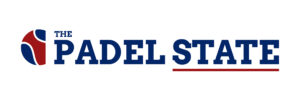
The following article is from guest columnist Eric Loftus, President of Northeast Padel.
Looking back at the last 12 months, it’s easy to notice just how much progress there has been in the padel movement in the United States. It’s been, to coin a phrase, a “breakthrough year” for American padel, and there are a number of examples that can be cited that show the advance being made by the world’s fastest-growing sport in the world’s largest sports market.
In 2023, we saw the debut of America’s newest professional sports league, the Pro Padel League – or PPL as it’s known to the padel community. With seven franchise teams – and that number expanding to 10 for Season 2 – the PPL has already proven it will be a great vehicle for growing padel’s profile to fanbases in the major cities and beyond in the years ahead.
We witnessed the birth of new clubs in some of the major cities, with Padel Haus opening its second permanent site in the iconic DUMBO district of New York City and the eye-catching pop-up outdoor Domino Park location on the banks of the East River. On the West Coast, we saw the U.S.’ largest operator Taktika Padel open the doors of its second facility, at the home of the Major League Soccer team LA Galaxy in Carson, Los Angeles. And many other new clubs and facilities in San Francisco, Texas and elsewhere.



Padel’s Mainstream Moment
If media exposure is a barometer of a sport’s step change in the public consciousness, we’ve also noticed a significant shift in the attention given to this exhilarating racket sport. The sport was written about twice in the New York Times in quick succession, in publications as varied as the Financial Times and Vogue, and featured well on broadcast television with CBS and NBC.
There’s the advent of a new tour, A1 Padel which following investment from the New York Yankees, then announced its New York City debut beneath the Manhattan skyline, at the Wolfman Ice Rink in Central Park. Then there’s the arrival of new businesses in the sector, and that includes our own Northeast Padel which we established with the clear goal of being the benchmark for high quality padel court construction in the U.S. Northeast.

Built on the Past, Looking to the Future
What gave us the confidence to know that setting up Northeast Padel was the right thing to do was our 50 years-plus experience in the construction industry, our unmatched status as the foremost award-winning tennis court builder and running track installer (which includes 50-plus American Sports Builders Association (ASBA) Distinguished Facility Awards and two accolades as Racquet Sports Industry Magazine’s Court Builder of the Year) and our passion and thirst for this great sport that’s now arriving on our shores at pace.
Prior to launching, our team spent 12 months conducting due diligence on the padel court construction market in the U.S., which included looking into suppliers and carrying out market research; and it also included looking into the current sub-standard court installation compliance issues that are arising from some of the courts imported from Europe without the required paperwork and insurance, and laborers transporting, unloading and installing the courts without the required work permits.
With our full turn-key service, from architect designs to planning, consulting, construction and after-sales support, that is where Northeast Padel will stand out. We won’t accept cutting corners as we help build the padel industry here in the U.S. Northeast, and we won’t allow the nascent padel industry in America to get a bad reputation. We will ensure construction is done according to recognized American standards.

What Lies in Wake in 2024?
Well, if 2023 was viewed as a breakthrough year in itself we would expect the next 12 months to be even more transformative. We, at Northeast Padel, will be accelerating the growth of our company with numerous projects and courts coming to fruition in Massachusetts and the New England region.
We are excited to bring our courts to a sports-passionate city such as Boston this coming year, and what drives us is the prospect at seeing people getting on a padel court for the first time and witnessing this phenomenal sport. In tandem to court construction, we will play our part in ensuring enhanced collective standards in the construction process across the country, and where we can, continue to educate local building departments and public authorities on this new sport which, in turn, we hope will expedite the proliferation of padel.
At the broader level, expect to see real strides made with new clubs emerging (it’s predicted there could be as many as 10,000 courts in the U.S. by 2030 so we would expect growth to become exponential in the next few years), the advance of the PPL with a larger pool of franchise teams – in turn, taking padel to fanbases in new cities such as Houston, New York City, and Orlando – and much greater discussion around padel at the likes of the inaugural RacquetX Conference in Miami in March.
There is much to be optimistic about with padel in the United States next year, and we are thrilled to be part of its growth story.













